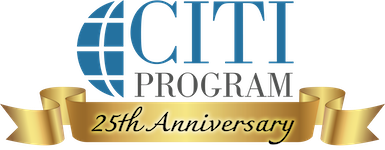Background
Artificial Intelligence, or AI, is redefining scholarly publishing. New improvements in AI are displaying its potential to supplement traditional methodologies in crafting research and academic-driven literature. Recently, an article published in Nature revealed that the ChatGPT technology demonstrates an impressive prowess at writing scientific abstracts. [1] The papers were crafted so well that scientists could not determine that a professional research author didn’t write them.
Given this amazing accomplishment by OpenAI developers, it is easy to see the notable benefits associated with specific applications. However, despite being able to streamline workflows, many experts in the academic community wonder if AI technology may come at a cost to preserving academic integrity.
ChatGPT is free to users for an indefinite period to improve the model via user-based research and feedback. However, at the time of this writing, it is closed temporarily to new users because it is at capacity.
Is ChatGPT Technology the Future of the Written Word?
With many layers associated with the functionality of AI, there are questions sparking conversations regarding its use in academic circles. AI developers reiterate that ChatGPT technology is still in its infancy and will likely undergo continuous transformations.
How does ChatGPT work?
OpenAI released ChatGPT, a type of artificial intelligence trained to deliver conversational language in a written or text format. Developers optimized ChatGPT with complex algorithms and large volumes of human conversational datasets to make the tool able to decipher and respond to human language. Being trained in this way enables ChatGPT to engage using a natural dialogue pattern when responding to queries.
What can ChatGPT do?
Since the release of ChatGPT, users have begun testing artificial intelligence for a wide range of uses. Some of the more exciting functions include being able to:
- Deliver answers to complex questions.
- Ability to generate answers in multiple formats such as text data, code, annotations, essay papers, and detailed numerical explanations.
- Create content in diverse forms such as jokes, cover letters, resumes, poems, and scientific and academic literature.
- Decipher math problems.
- Offer suggestions and advice.
- Write music.
The possibilities of ChatGPT in academic settings are forcing professors to redesign how they test their students’ analytical aptitude. Professor Christian Terwiesch from the University of Pennsylvania’s Wharton School of Business became curious about the new technology and decided to try the efficiency of ChatGPT out of one of his final exam prompts.
The results were surprisingly well enough to earn a B grade! This revelation was a clear indicator that faculty members will have to find innovative ways to assess the student’s actual knowledge, given that they will have access to these tools. [5]
Challenges and Considerations for ChatGPT3 (Current version)
ChatGPT commonly offers a message citing that it is at capacity. This implies some server issues.
ChatGPT does not have access to the internet, external, or location-based information. This is because ChatGPT depends on training using big datasets of predictive information and mimicking techniques. This prohibits the user from seeing URLs or references to anything on the internet.
ChatGPT is not able to deliver real-time or up-to-the-minute data. Because the application still needs to be able to crawl the web for the latest information, most of the communicated information needs to be updated.
ChatGPT cannot process multimodal information bits such as images or web links.
ChatGPT needs to gain the ability to decipher cultural language jargon. Figurative phrases may go beyond what it is trained to do. Consequently, this may limit the ability to understand contextual phrases and linguistic anomalies properly.
ChatGPT may unknowingly commit plagiarism and infringe on copyrights. This occurs because ChatGPT responds to queries using predictive and mimic-based techniques. By using big datasets of predefined language and information, the answers will reflect previously used content as answers, which may inadvertently ping common plagiarism detection tools. Turnitin, a specific software company to mitigate plagiarism, suggests that the user may have to proofread certain sections of an essay carefully, but there are ways to navigate around the problem using their tools. [6] The ethics surrounding this aspect of AI have presented some unanswered questions thus far, such as:
- How will copyright be applied to AI content owners?
- Can copyrighted data be used in training or research applications?
- What protections are available to those creating AI-based images, art, and content?
Applications and Language Model Interfaces: DALL·E 2 and InstructGPT
There are many derivatives of GPT-based technology or chatbots. The myriad of diverse chatbot applications aim to assist with:
- Modern Linguistics
- Menu Selection
- Keyword Recognition
- Voice Activation
- Machine Learning
What is DALL·E 2, and what are its uses?
DALL·E 2 is taking the internet by storm quite literally. With the supernatural-like ability to create an image based on a text description, this form of AI has opened both a floodgate of possibilities and concerns. This revolutionary AI tool can edit, transform, and expand existing images to suit the users’ preferences using diffusion. DALL·E 2 is offered as a beta release with a few restrictions on its use, such as [4]:
- It is disabled from producing violent images of any kind.
- It is disabled from producing harmful, offensive imagery such as pornography and hate crimes.
- It is being rolled out via a developmental phasing process to allow for improved processing based on feedback.
What is InstructGPT?
InstructGPT is touted as an enhancement of the original GPT-3. InstructGPT builds upon itself using a reward-based learning algorithm by taking cues from human feedback giving the tool an avenue for predicting human intention. Performance is said to be much improved from the original GPT model, as it has a fine-tuning mechanism called SFT or Supervised Fine Tuning. SFT allows for more detailed responses and the ability to follow instructions, hence the name. [2,3]
Summary
ChatGPT is a revolutionary tool that we expect to see evolve towards even greater applications. Despite the concerns surrounding its use in academic settings, the stage has been set for expanded opportunities to integrate the tools without disrupting the educational process.
OpenAI owners have openly set an optimistic revenue projection for AI technology to meet the 2Billion mark by 2024. [7]
References
- Else, Holly. 2023. “Abstracts written by ChatGPT fool scientists.” Nature, January 12. Accessed January 27, 2023.
- n.d. “Home.” Accessed January 27, 2023.
- 2022. “Aligning Language Models to Follow Instructions.” OpenAI Blog, January 27. Accessed January 27, 2023.
- n.d. “Dall·E 2.” Accessed January 27, 2023.
- Terwiesch, Christian. 2023. “Would Chat GPT Get a Wharton MBA? A Prediction Based on Its Performance in the Operations Management Course.” Accessed January 27, 2023.
- n.d. “Is it safe to use ChatGPT in academic essay writing?” Plagexpert Blog. Accessed January 27, 2023.
- Ruby, Daniel. 2022. “ChatGPT Statistics for 2023: Comprehensive Facts and Data.” Demand Sage, December 29. Accessed January 27, 2023.






